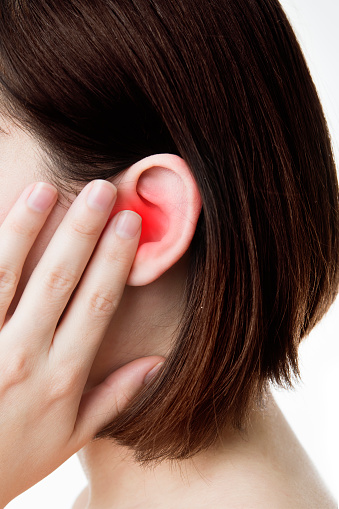 Researchers from the University of Southampton in the UK have found a simple treatment for a form of ear inflammation in children by having the patient inflate a balloon with their nose.
Researchers from the University of Southampton in the UK have found a simple treatment for a form of ear inflammation in children by having the patient inflate a balloon with their nose.
The human ear naturally contains a degree of fluids. The Eustachian tube connects the inside of the ear to the back of the throat, and it is through this that any excess fluid normally drains. In some cases, the tube becomes inflamed or partially blocked and fluid builds up in the middle ear. This traps bacteria inside the ear, allowing them to multiply and can lead to ear infections. This condition is called otitis media with effusion (OME).
OME has no obvious symptoms of its own and is usually only noticed when parents bring their child in for a regular checkup or when an ear infection develops. The disruption of the middle ear, plus the recurrent ear infections, can impair a child’s hearing development if left unaddressed. Unfortunately, medications are of limited effectiveness and the alternative is surgery to insert “ear tubes” to force the Eustachian tubes open, or to create a hole through which fluid can drain.
In the Canadian Medical Association Journal, the UK researchers describe how they used a procedure called “nasal balloon autoinflation” to treat OME. During the procedure, the child blows through each nostril into a nozzle to inflate a balloon. This sends air through the middle ear and relieves the built-up pressure, allowing any retained fluid to drain. The children in the treatment group performed autoinflation three times per day for about two months. At the end of the third month, 49.6% of children who auto-inflated had normal middle ear pressure, while only 38.3% of the control group did.
Since autoinflation is a simple and inexpensive procedure, the researchers believe it to be easy for primary care physicians to teach with a reasonable expectation that children will perform it correctly at home. The researchers recommend that doctors offer autoinflation alongside regular treatments for OME to better manage the condition and to prevent the associated hearing loss from developing.
About 90% of children will experience at least one episode of OME before the age of ten. This is because a child’s Eustachian tubes are shorter and easier for bacteria to enter, floppier with a smaller opening that is easier to block, and because their immune systems are not as adept at recognizing and warding off colds.
Sources for Today’s Article:
“Otitis Media with Effusion,” MedlinePlus Medical Encyclopedia. Accessed July 28, 2015. http://www.nlm.nih.gov/medlineplus/ency/article/007010.htm.
Paddock, C., “‘Glue Ear’ May Be Treatable with Nasal Balloon.” Medical News Today web site, July 28, 2015, http://www.medicalnewstoday.com/articles/297357.php.
Williamson, I., et al. “Effect of Nasal Balloon Autoinflation in Children with Otitis Media with Effusion in Primary Care: An Open Randomized Controlled Trial.” Canadian Medical Association Journal. Accessed July 28, 2015. doi:10.1503/cmaj.141608.
